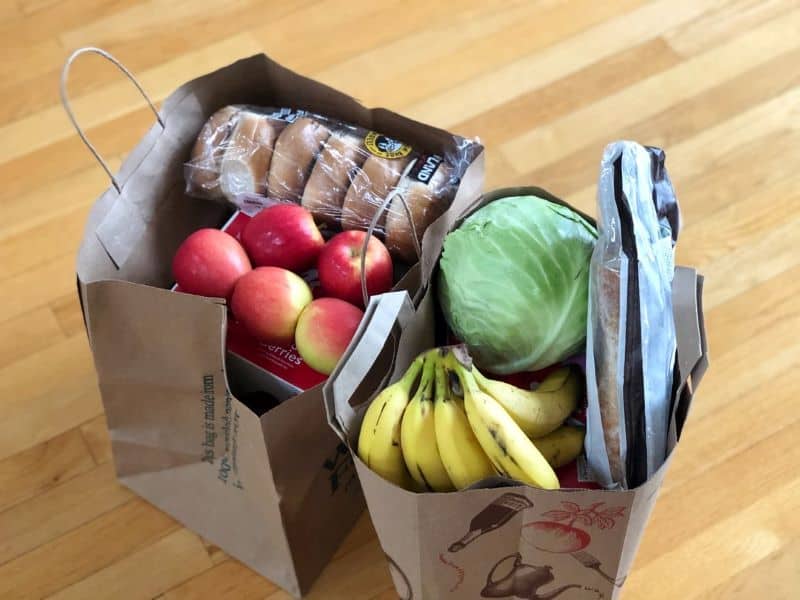How Much Money Can You Make and Still Get Food Stamps?
The information in this article is current as of February 10, 2022.
If you go grocery shopping for your household, it’s no surprise to you that food prices have gone up. Even considering inflation, the food price increase from 2019 to 2020 was 75% above average.

This number doesn’t sound great if you’re already on a tight budget. You may be wondering how you can put food on the table for your family. There’s even a chance you’re curious to know, “How much can you make and still get food stamps?”
Food stamps, now known as SNAP, are an incredibly beneficial tool to help you pay for your family’s groceries. Below we’ve created a guide explaining what to expect and how much you can make to still qualify for SNAP. Keep reading to learn more.
What Is SNAP?
43% of SNAP beneficiaries are children, and a third of recipients have households with seniors or people with disabilities.
SNAP stands for Supplemental Nutritional Assitance Program. Formerly known as food stamps, SNAP gives nutritional support to low-wage working families, low-income seniors, and people with disabilities on fixed incomes. SNAP also helps individuals and households with low payments.
In addition to unemployment insurance, SNAP is one of the most helpful programs assisting families experiencing economic turmoil.
The federal government pays the total cost of SNAP benefits. It splits the cost of administering the program with the individual state governments.
Recent Changes to SNAP Benefits
Congress and the United States Department of Agriculture temporarily modified SNAP eligibility and benefits because of the Covid-19 pandemic. The most recent update extended the Covid-19 Public Health Emergency state until April 16, 2022.
The SNAP monthly benefits also increased for October 2021 from September 2021.
SNAP assumes that families who receive benefits will spend 30% of their net income on food. Therefore, families with no net income will have the highest maximum benefit. In August 2021, the USDA announced an update to the diet plan that determines benefit amounts.
The increase raised benefits to help families afford a more nutritious diet and showed up in the 2022 fiscal year.
The per-person increase per household size looks as follows:
- 1-person: $16 increase per person
- 2-person: $14.50 increase per person
- 3-person: $14 increase per person
- 4-person: $13.25 increase per person
- 5-person: $12.60 increase per person
- Each addition person: $12 increase per person
(Alaska, Hawaii, Guam, and the Virgin Islands have different maximum benefits and their amounts were different.)
How Much Can You Make and Still Get Food Stamps?
To be eligible to receive SNAP benefits, the federal government has three tests for households. With SNAP, the term household is defined as a residence where individuals live together and prepare food.
The first is gross monthly income. Maximum income for food stamps must be at or below 130% of the poverty line. For a family line of three, the poverty line to calculate SNAP benefits for the federal fiscal year 2022 is $1,830 a month.
130% of this number is $2,379 a month, or about $28,550 a year. So a three-person family with this amount of gross monthly income would be eligible for SNAP, and the poverty level changes based on the size of the family. After applied deductions, net income must also be at or below the poverty line.
Below is a list outlining SNAP income eligibility limits for the year October 1, 2021, through September 20, 2022, based on household size:
- 1-person: gross monthly income limit of $1,396, net monthly income limit of $1,074
- 2-person: gross monthly income limit of $1,888, net monthly income limit of $1,452
- 3-person: gross monthly income limit of $2,379, net monthly income limit of $1,830
- 4-person: gross monthly income limit of $2,871, net monthly income limit of $2,209
- 5-person: gross monthly income limit of $3,363, net monthly income limit of $2,587
- 6-person: gross monthly income limit of $3,855, net monthly income limit of $2,965
- 7-person: gross monthly income limit of $4,347, net monthly income limit of $3,344
- 8-person: gross monthly income limit of $4,839, net monthly income limit of $3,722
- Each additional member: add $492 for gross monthly income and $379 for net monthly income
Assets also must fall below certain limits for the majority of states. Households must have assets of $2,500 or less. Households with someone older than 60 or with a disability must have $3,750 or fewer assets.
SNAP Benefits by Household Size
Depending on the size of your household, you’ll be eligible for specific benefit amounts for the 2022 fiscal year ending September 30, 2022.
The following list describes the benefits per household size, with all data from SNAP’s Fiscal Year 2022 Cost-of-Living Adjustments:
- 1-person: maximum monthly benefit of $250, estimated average monthly benefit of $175
- 2-person: maximum monthly benefit of $459, estimated average monthly benefit of $334
- 3-person: maximum monthly benefit of $658, estimated average monthly benefit of $520
- 4-person: maximum monthly benefit of $835, estimated average monthly benefit of $635
- 5-person: maximum monthly benefit of $992, estimated average monthly benefit of $748
- 6-person: maximum monthly benefit of $1,190, estimated average monthly benefit of $869
- 7-person: maximum monthly benefit of $1,316, estimated average monthly benefit of $941
- 8-person: maximum monthly benefit of $1,504, estimated average monthly benefit of $1,137
- Each additional person: maximum monthly benefit of $188
The Three-Month Time Limit
If you are a household without small children in the home or anyone with disabilities present, your state may limit your SNAP benefits. As a result, you may be eligible to receive only three months of SNAP benefits every three years.
The three-month time limit says that individuals between 18 and 50 can only receive three months of SNAP benefits every three years unless they are working or in a training program for 20 hours a week.
Congress has since suspended this limit in response to the pandemic. The limit is not in effect until the month after the federal public health emergency ends.
Some states with mandatory training or job search requirements have also temporarily suspended the limit.
SNAP Benefit FAQs
Have a question about SNAP? Below are answers to some of the most commonly asked questions about qualifying for this program.
How Do I Apply for SNAP?
Applying to SNAP looks different for every state, and you must apply for SNAP in the state in which you currently live.
Each state has a different application form and process, so a household member should contact your state agency to apply.
To contact your state agency, you can visit your local SNAP website, visit your state agency’s website, or call your state’s toll-free SNAP hotline. In addition, some states allow you to complete applications online.
What Resources Don’t Count for Eligibility?
Currently, households can have $2,500 in countable resources (like cash in a bank account) or up to $3,750 if at least one member of the household is disabled or above the age of 60.
However, specific resources do not count when determining your SNAP eligibility:
- Home and the lot
- Resources of people who receive Supplemental Security Income (SSI)
- Resources of people who receive Temporary Assistance for Needy Families (TANF)
- Most retirement plans
Licensed vehicles are counted as a resource for SNAP purposes and exemptions. They are not counted if:
- Used for income-producing purposes
- Needed for long-distance travel other than or work
- Used as the home
- Needed to transport physically, a disabled household member
- If the sale of the vehicle would result in less than $1,500
For non-excluded licensed vehicles, the fair market value of over $4,650 counts as a resource.
Are Students Eligible for SNAP?
Students aged 18 to 49 and enrolled in college at least half-time are not eligible for SNAP unless they meet specific exemptions.
Exemptions include:
- Not between the ages of 18 and 50
- Have a physical or mental disability
- Work at least 20 hours a week in paid employment
- Involved in a state or federally financed work-study program
- Care for a child under 6
- Are a single parent enrolled full-time in college and raising a child under 12
- Receive TANF assistance
- Enrolled in a TANF jobs program
- Are assigned to a college or higher education instituted through a SNAP Employment and Training Program or specific other E&T programs
To determine if you meet exemptions, we recommend that you reach out to your local SNAP office.
How Long Will I Receive SNAP?
If you are determined eligible for SNAP assistance, you’ll receive a notice telling you your certification period, which is how long you will receive SNAP benefits.
Before your certification period ends, you’ll receive a second notice that requires you to recertify if you wish to continue receiving benefits. Again, your local SNAP office will give you more information.
Are Non-Citizens Eligible for SNAP?
Undocumented non-citizens are not granted eligibility for SNAP. However, non-citizens can receive SNAP if they are lawfully present and meet specific criteria.
Usually, non-citizens can qualify for SNAP if they meet one of the following criteria:
- Have lived in the US for at least 5 years
- Be children under 19
- Be receiving disability-related assistance
These individuals must also meet other SNAP requirements, including income and resource limits.
SNAP: Understanding your Eligibility
If you were wondering, “How much can you make and still get food stamps?” we hope this resource has helped you.
The US government makes it possible so that you should be able to have food security, even with a low income. And with Covid-19, you may be eligible for even more benefits.
StandUp Wireless is here to help you learn about resources and opportunities. Visit our recommended resources page to learn more about the SNAP program and other tools.
Save Money on Your Wireless Phone Service
If you qualify for federal benefits like SNAP, you also qualify for Lifeline service. Lifeline is a federal benefit program that allows low-income consumers to receive free or heavily discounted communication services. Click here to find out more and apply for this valuable benefit.



